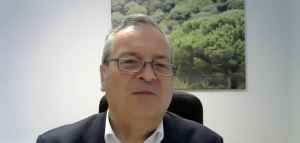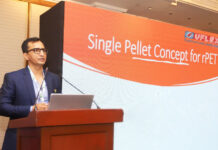During the Virtual International Conference on Advancements and Challenges in the Food Packaging Industry, organized by the PHD Chamber of Commerce and Industry on 23 and 24 March, some of the world’s leading ink manufacturers talked about their approach towards sustainability. Hubergroup’s Lars Hancke talked about his company’s Cradle to Cradle Certified status. Cradle to Cradle Certified is a certification mark licensed exclusively by the Cradle to Cradle Products Innovation Institute.
“We started our journey by getting Cradle to Cradle certification. From our perspective, this the most comprehensive certification that for sustainability performance. Why? Because this combines product sustainability with sustainable and responsible behavior of the company as a whole. While other certifications are more product oriented,” Hancke said.
Hubergroup has developed a wide range of products that have been tested and approved according to the Cradle to Cradle standards.
In order to obtain this certification, the independent environmental institute EPEA assessed the ink manufacturing process with regard to the company’s eco-management relating to the responsible handling of energy and water resources, and Hubergroup’s alignment with corporate social responsibility. In autumn last year, the company received the full certification for its Gecko solvent-based inks and Hydro-X water-based inks. For its offset inks, Hubergroup has attained the certification for its Indian sites. The company is now ready to roll out certified solvent-based inks in India as well, he said.

Siegwerk’s Transparency Label Jorg Peter Langhammer of Siegwerk in his presentation said that transparency is the key to ensure packaging safety. With the launch of its Transparency Label, the company is fostering its responsibility regarding ink safety and regulatory issues on a global level. Most of all, the label reflects its commitment
to full proactive transparency and shared responsibility along the packaging supply chain.
This does not only include manufacturing safe inks according to GMP and based on thoroughly evaluated raw materials, but also providing all information and documents to customers and business partners in order to print a safe and compliant product.
Talking about the company’s approach to sustainability in India, Langhammer stated that Siegwerk has decided to go toluene-free in India for food packaging inks. The company has also launched mineral free inks in India. The inks supplied by Siegwerk from its plant at Bhiwadi in Rajasthan do not contain mineral oils as an intentionally added substance, that comprises of two fractions – Mineral oil saturated hydrocarbons (MOSH) and Mineral Oil Aromatic hydrocarbons (MOAH).
“Siegwerk only supplies products for food packaging which are manufactured without toluene on a global level,” Langhammer said. Langhammer informed the












